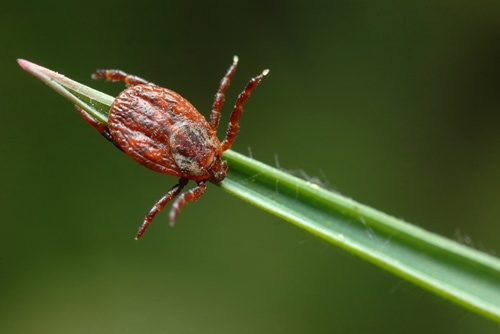As the weather continues to improve, protecting your horse against unwanted pests becomes more serious. Ticks in particular pose a big threat to horse health, as these pesky bugs are known to spread a variety of harmful diseases to animals. While these arachnids are small in size, they can certainly produce big complications, particularly with grazing horses. Utilizing a variety of oils or medications to boost your horse’s line of defense against ticks is essential to ensuring its safety, but knowing the proper ways to control and remove tick infestation is also extremely important. Here are a few tips to consider when it comes to defending your horse from ticks:
Know the consequences
While everyone knows that ticks certainly aren’t good to have around, some people may not be sure exactly why protecting animals against these insects is so crucial. According to researchers from the University of Minnesota, there are two essential diseases ticks carry that pose as serious health risks for horses: Anaplasmosis and lyme disease. Anaplasmosis is a bacterium transmitted by ticks that is most commonly identified with horses. The disease itself affects the animal’s white blood cells, causing the immune system to lower its ability, resulting in several potential symptoms. The University of Minnesota states that signs of anaplasmosis can include anything from fever, hemorrhaging of the face, fatigue or muscle inflammation, and signs can begin to take place between 10-45 days after infection.
Lyme disease is the condition most identified with ticks, although its diagnosis in horses is generally less common than anaplasmosis. This condition is also typically less severe than the other disease, and indications that lyme disease is present can take weeks, sometimes months, before being noticeable. General signs of lyme disease may include frequent lameness or joint swelling, and complications within the kidneys in more severe cases. There are currently no vaccines specifically designed to treat horses for lyme disease, which is why it’s important to take necessary precautions to avoid this unfortunate condition.
Detecting ticks
Spotting a small tick on your large horse is easier said than done. However, thorough inspections for ticks are essential for not just your horse’s health, but for your own as well. An easy way to tell that ticks are biting your horse is by noticing whether your horse is attempting to scratch a particular area of its body. Sometimes this can be seen when a horse scratches its face or neck on a fence, or constantly swipes its backside with its tail. Getting up close and personal and sorting through each dimension of a horse’s body will eventually allow you to detect ticks or even tick bites. If you feel any welts that are approximately one inch in diameter, it could very likely mean that ticks are present elsewhere on the body.
Removing ticks
There is a certain protocol when it comes to removing ticks, and crushing them instantly or lighting a match next to them are not the most efficient ways to get rid of them. These strategies often cause the tick to regurgitate blood back onto the horse, which can quickly lead to further infection or transmission of diseases. Instead, take out a set of tweezers and pluck the tick firmly on its head. Gently pull the bug away from the horse’s body and dispose of it in a safe manner, such as a small container of rubbing alcohol. Wash the area you removed the tick from as well as your hands. After you’ve successfully removed ticks from your horse, consult with your veterinarian about which types of oils and medications are most appropriate for your animal. Follow directions as advised and continue to keep a look out for these pests.








